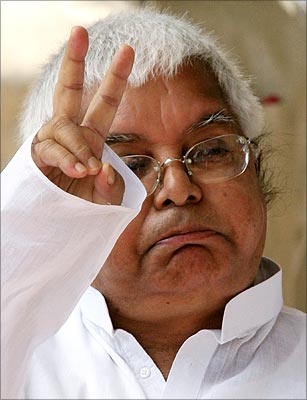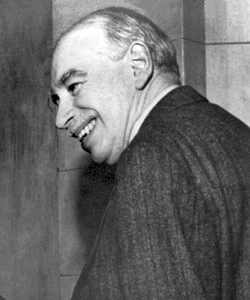That is mind blowing. An 18% growth rate is mind blowing. कौन से घाट का पानी पीते हैं नीतिश? उस पानी को bottling करो।
अमरिका बेलायत ने कभी ४-५% से ज्यादा किया नहीं। वही है कि दशकों तक ४-५% करते रहो तो बहुत हो जाता है। तो जब चीन ने १०% करना शुरू किया तो पहला रिएक्शन था, "चीनके बन्दर, हम ने तो कभी ५% से ज्यादा किया नहीं और ये कह रहे हैं हम १०% कर रहे हैं? जरूर झुठ बोल रहे होंगे।"
१८% ---- ये तो बौखला देने वाली नम्बर है।
लालु ने जब रेलवे में बम्पर मुनाफा दिखाया तो लोग बौखला गए थे, पश्चिमी देश के लोग कहने लगे, "ये कौन सा मॉडल है? हमारे किताबों में कहीं है ही नहीं।" कि इतना बड़ा फ़ौज है भारतीय रेलवे के पास। कमसेकम ३ लाख लोग तो काम कर ही रहे होंगे भारतीय रेलवे के लिए। वर्षों से, दशकों से पश्चिमी देश के लोग रिपोर्ट पर रिपोर्ट लिख रहे थे, सुझाव दे रहे थे, कि भारतीय रेलवे को मुनाफे में ले जाना है तो कंटनी छंटनी करो। Downsizing करो। लोगों को नौकरी से दफा करो। तो लालु ने वैसा कुछ किया नहीं, "I am a man of the people" कहते रह गए। तो किसी को कोइ होप नहीं था कि कुछ होगा। लालु मजाकिया आदमी, लोगों को इंटरटेन करते रहेंगे --- कुछ ऐसा expectation था। लेकिन लालु ने बम्पर मुनाफा दिखा दिया। सबको आश्चर्य हुवा। उसके बाद ममता आयी, तो फिर से भारतीय रेलवे घाटे में चला गया।
अभी भी लोग ठीक से समझ नहीं पा रहे हैं, आखिर लालु ने किया तो किया क्या? आंकड़े तो हैं। क्या किया वो तो है। सबके सामने है। लेकिन कैसे किया? लोग फोर्मुला अभी तक ढूँढ रहे हैं, मिल नहीं रहा है। और लालु है कि बता नहीं रहे हैं।
और ये नीतिश का १८% ---- मेरा तो शर चकरा गया ---- आखिर कैसे? कैसे हुवा? कैसे किया आपने?
ये दोनों बिहार के जादुगर। हात की सफाइ मारते रहते हैं।
अगर बिहार १८% कर सकती है तो बाँकी भारत को १५% तो करना ही होगा। थोड़ा आप लोग भी तो करो।

Bihar has developed in last one decade: Nitish
the state recorded a growth rate of
17.99 percent
at current price during 2014-14. In 2004-05, the Gross State Domestic Product (GSDP) was Rs.77,781.16 crore, which increased in 2014-15 to Rs.402,282 crore. ..... The plan expenditure was Rs.3,124.32 crore in 2004-05, which increased to Rs.43,931.61 crore,an average increase of 31.95 percent. ...... In the education sector, children in the age group of 6 -14 years were brought to school. "There were 12 percent children out of school in 2005 which now has been reduced to 1.72 percent," Nitish Kumar said. ...... He said 40 lakh children studying in class 9 received money for buying cycles. ..... Nitish Kumar said the vaccination under regular immunization was 18.6 percent in 2005, which now had increased to 78 percent. This figure is higher than the national average. ...... "The state government has constructed 66,508 km major and rural roads in the last decade. Similarly, 5,431 major bridges were constructed to improve connectivity." ....... The per capita consumption of electricity in the state increased from 70 kWh in 2005 to 203 kWh in 2015. ...... "In November 2005, average availability of power was 6 to 8 hours in the urban areas and 2 to 3 hours in rural area. But in 2015, the average availability of power in urban area is 22 to 24 hours and 15 to 16 hours in rural areas," Nitish Kumar said.





Bihar’s development record under Nitish Kumar
Kumar seems to have maintained his good track record in his second term. Bihar’s performance on many socio-economic indicators after 2005, when Kumar took over, is not only better than its own performance in the previous decade, but also of comparable states or the national average. Among the states we have taken for comparison with Bihar are Madhya Pradesh, Odisha, Rajasthan, Uttar Pradesh and West Bengal.......... Bihar’s economic growth has been impressive under Kumar’s tenure. The average annual growth of Bihar’s economic output was the highest among selected states. Its performance in agriculture was second only to Madhya Pradesh......... Writing before the 2010 assembly elections, economist Swaminathan Aiyar attributed the economic turnaround of Bihar to improved law and order situation under Kumar. A look at the National Crime Records Bureau data shows significant reduction in crimes such as dacoity and robbery under Kumar’s tenure. ....... Bihar’s high growth can be mainly attributed to the fact that it started on a lower base. ...... Bihar has cut leakages from the public distribution system, which came down from 75-90% during the 2000s to less than 25% in 2011-12. ....... Bihar has also witnessed the second highest reduction in poverty among these states. ..... Reviving public health facilities was another of Kumar’s priorities. Although the share of health and education spending as a share of the gross state domestic product came down from 6.3% to 4.7% between 2005-06 and 2013-14, in absolute terms, there was a more than three-fold increase. The spending also appears to have been done more efficiently. ..... Bihar has managed to bring down infant mortality rates (IMR) at a faster pace than the national average. IMR is the number of dead children under one year per 1,000 live births. Although the state’s IMR is still higher than all-India levels, the gap reduced after Kumar took over. ...... One of the most popular schemes Kumar started was giving bicycles to school-going girls. This and several such efforts seem to have paid dividends in the education sector as Bihar recorded the highest improvement in retention rates among this group of states. Retention rates are defined as a percentage of students who manage to reach grade V after having enrolled in grade I. ...... Despite this progress, Bihar remains among the poorest states in terms of per capita income. Its rank in social development is close to the bottom. ..... BJP, his main opposition, is also claiming credit for the same. After all, JD(U) and BJP were in an alliance from 2005 to 2013, when Kumar walked out of the National Democratic Alliance (NDA) opposing Narendra Modi’s prime ministerial candidature. The NDA swept the 2014 elections when Kumar and Yadav were not together.





